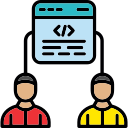Step-by-Step Guide to Low-Code Application Creation
Chosen theme: Step-by-Step Guide to Low-Code Application Creation. Build powerful apps faster than you thought possible, with clarity, creativity, and the confidence that you can ship something useful this week—not someday. When our ops team built a vacation-tracker in two afternoons, the smiles were real and the spreadsheets vanished. Subscribe to follow every step and share your wins with the community.
Define the Why and the Who
Capture the need in a sentence: who struggles, at what moment, and why the current workaround fails. Add three measurable success metrics so you can prove value later. Comment your statement below for feedback.

Model Your Data Visually
Identify Entities and Relationships
Name the core entities—Requests, Approvals, Users, Teams—and how they relate. Avoid over-normalizing too early; optimize for clarity and maintenance. Share a quick sketch of your entities to get community suggestions.
Set Rules for Clean, Trustworthy Data
Add required fields, formats, and reference tables. Use status enums instead of free text to avoid chaos. Define ownership for each dataset. Subscribe to get our checklist for data governance in low-code.
Connect Existing Sheets and Databases
Import historical data from CSV, link to Sheets or SharePoint, and map fields carefully. Test with small samples first to avoid surprises. Comment if you want a mapping template tailored to your scenario.
Design Interfaces That Guide, Not Confuse
Start with paper sketches and a quick click-through prototype. Run a pretend demo with a user and listen for hesitation. Only then drag your components. Post your sketch; we’ll vote on the clearest flow.
Design Interfaces That Guide, Not Confuse
Use sufficient contrast, keyboard navigation, descriptive labels, and error messages that teach. Test with screen readers if possible. Subscribe for our accessible components starter pack and share your favorite patterns.



Integrate Without Breaking Momentum
Check the connector catalog for email, chat, storage, and HR systems. Validate permissions with IT early to avoid surprises. Comment which connector saved you hours, so others can discover it.
Integrate Without Breaking Momentum
If a connector is missing, wrap a reliable REST endpoint with rate limits and timeouts. Document inputs and outputs in plain language. Subscribe for a lightweight API spec template adapted for low-code teams.


Test, Learn, and Iterate Quickly
Build a Safe Sandbox
Create dev, test, and prod environments with seeded data. Use feature flags for risky changes. Ask a colleague to attempt a task cold and report confusion. Subscribe to receive our seeding script ideas.
Usability Tests That Take 15 Minutes
Give users three tasks and listen, do not lead. Note where their eyes pause and where their mouse wanders. Share your top usability insight this week; we’ll compile a community playbook.
Measure What Matters
Track task completion time, error rates, drop-offs, and satisfaction scores. Celebrate small wins with screenshots and numbers. Comment your best metric improvement; your story might help someone push a release.
Deploy Securely and Plan for Growth
Controlled Releases and Change Management
Use versioning, release notes, and staged rollouts. Keep a rollback plan ready. Invite a small champion group first. Subscribe for our release-note template crafted for non-technical stakeholders.
Roles, Permissions, and Compliance
Map least-privilege roles to your data model. Log access and sensitive actions. Align with your org’s compliance needs. Share a permission gotcha you solved to help others dodge the same trap.
Observability and Maintenance
Set up dashboards for usage, latency, and failed flows. Schedule housekeeping for stale records and orphaned files. Comment if you want our maintenance checklist for monthly health reviews.
